- HOME
- Top Page
- Our Businesses
- Thermal Hydraulics Analysis
Thermal Hydraulics Analysis
Recent simulation programs have undergone a variety of improvements that allow highly accurate analysis of product performance and thermal hydraulics phenomena. For this reason, we use CAE as a design support tool when developing products. It can also be used for making forecasts at low cost and in a short amount of time.
Chugai Technos uses general-purpose programs to elucidate product performance and thermal hydraulics phenomena.
Forecasting Pressure Loss in Piping
-
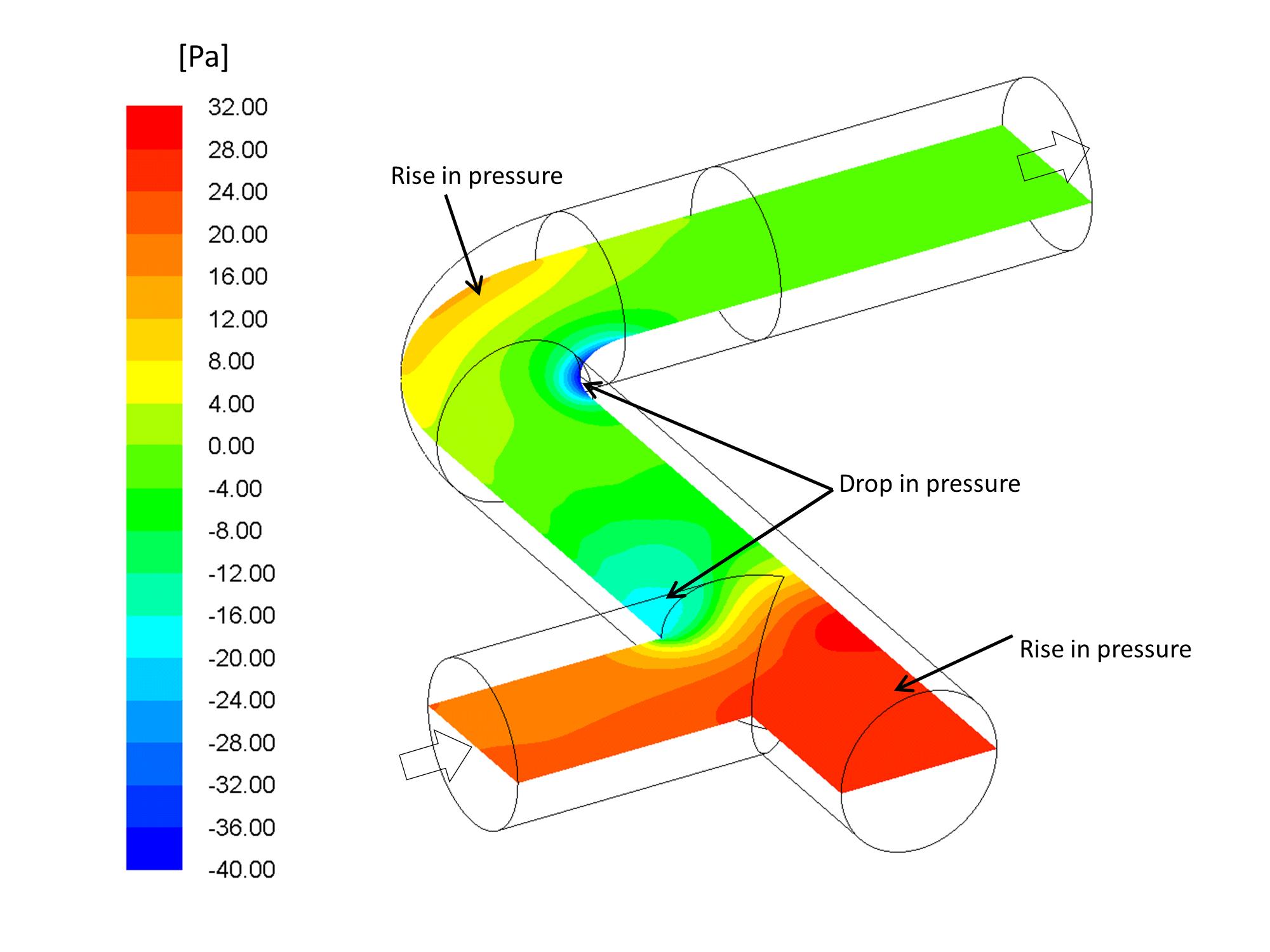
-
Forecasting pressure loss in an energy plant is an important factor in designing hydraulic machinery. As pressure loss increases, the efficiency of energy utilization decreases. In thermal hydraulics analysis, pressure loss such as changes in area, bending, branching, and merging is forecast, and this is used to study how to reduce pressure loss.
This calculation example shows pressure distribution in a central cross section, as a result of the analysis of the gas fluid flowing through the T joint and the 90° elbow. From these analysis results, we can understand the pressure status of the gas flowing through the T joint and the 90° elbow. According to these results, a large pressure loss occurs before and after the T joint. You can see the rise and fall of pressure in the image.
Forecasting Flow Velocity Distribution
-
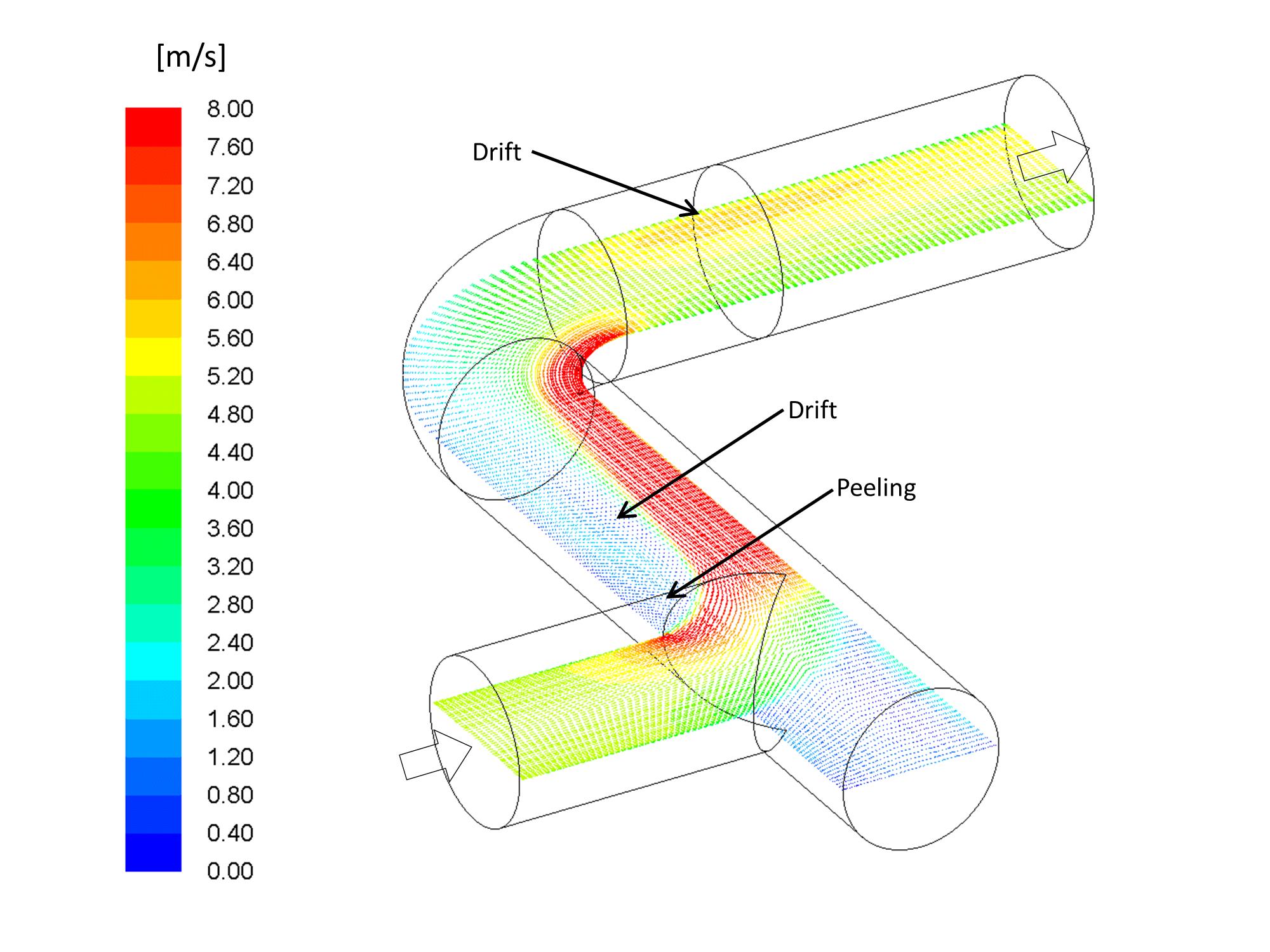
-
Forecasting flow velocity distribution is an important factor in improving the performance of equipment when designing hydraulic machinery. Thermal hydraulics analysis can be used to forecast the flow velocity distribution in any cross section. In addition, as a measure for improving flow velocity distribution, it is possible to check the effect of installing straightening vanes, perforated plates, etc., in order to design higher performance equipment and to study measures for preventing trouble.
This calculation example shows the flow vector in a central cross section, as a result of the analysis of the gas fluid flowing through the T joint and the 90° elbow. From these analysis results, we can understand the flow status of the gas flowing through the T joint and the 90° elbow. There is a large amount of peeling due to the flow along the inner side of the T joint, and there is drift between the T joint and the 90° elbow. We can see that this also affects the drift in the straight pipe immediately after exiting the 90° elbow.
Forecasting the Temperature Distribution of Air Conditioning Equipment
-
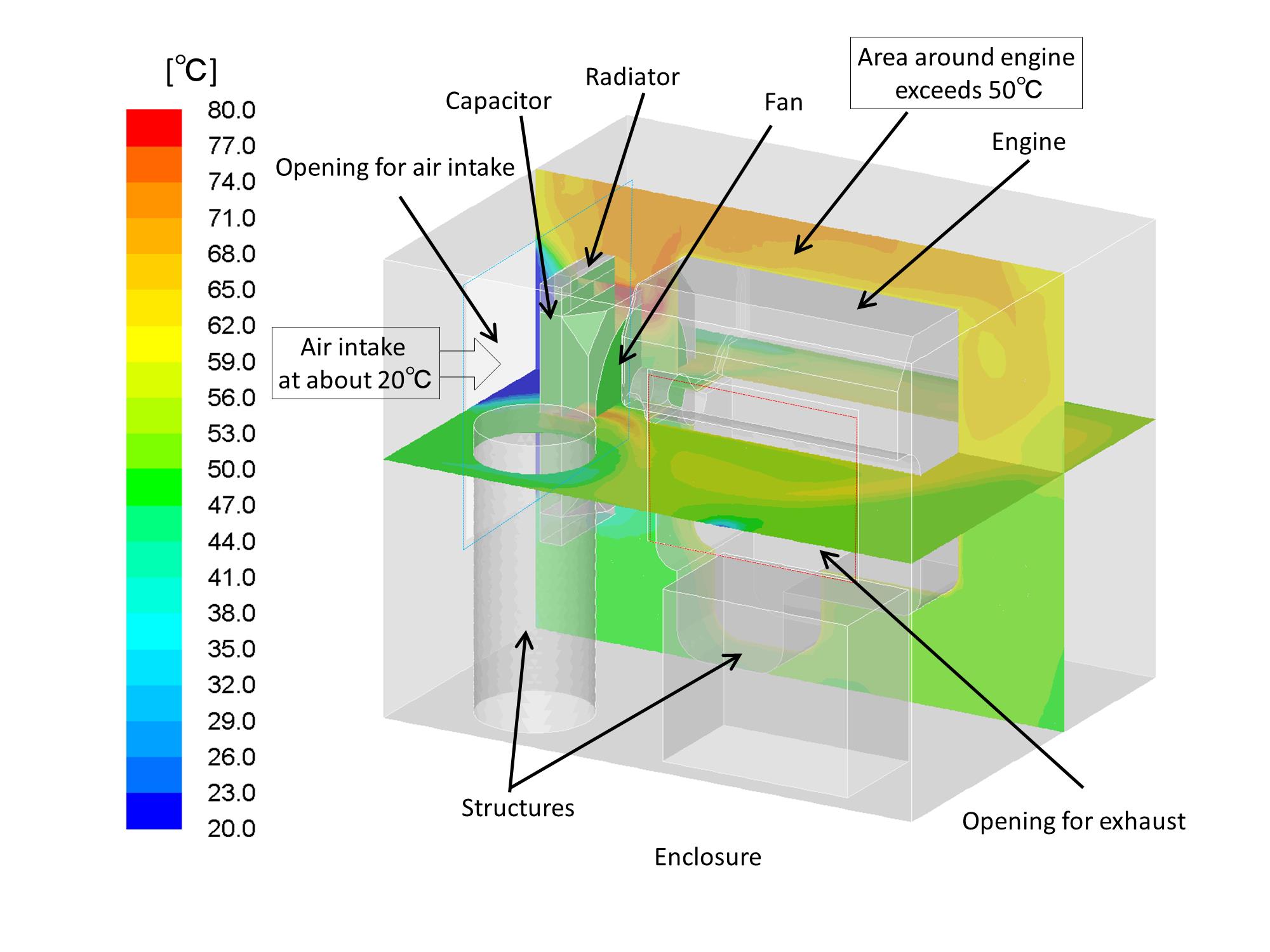
-
Forecasting temperature distribution is required in various fields, from the air conditioners we use every day to power plants. Thermal hydraulics analysis forecasts temperature distribution, which includes conduction, convection, and radiation - the three elements of heat transfer. This is utilized for the effective use of heat energy, with consideration for product efficiency enhancement and energy conservation.
This calculation example shows the temperature distribution around the engine that generates heat, as a result of analysis inside the enclosure. These analysis results allow us to understand the flow of cooling air and the stagnation of high temperature air, making an appropriate design possible.
Forecasting Heat Transfer in Equipment that Generates Heat
-
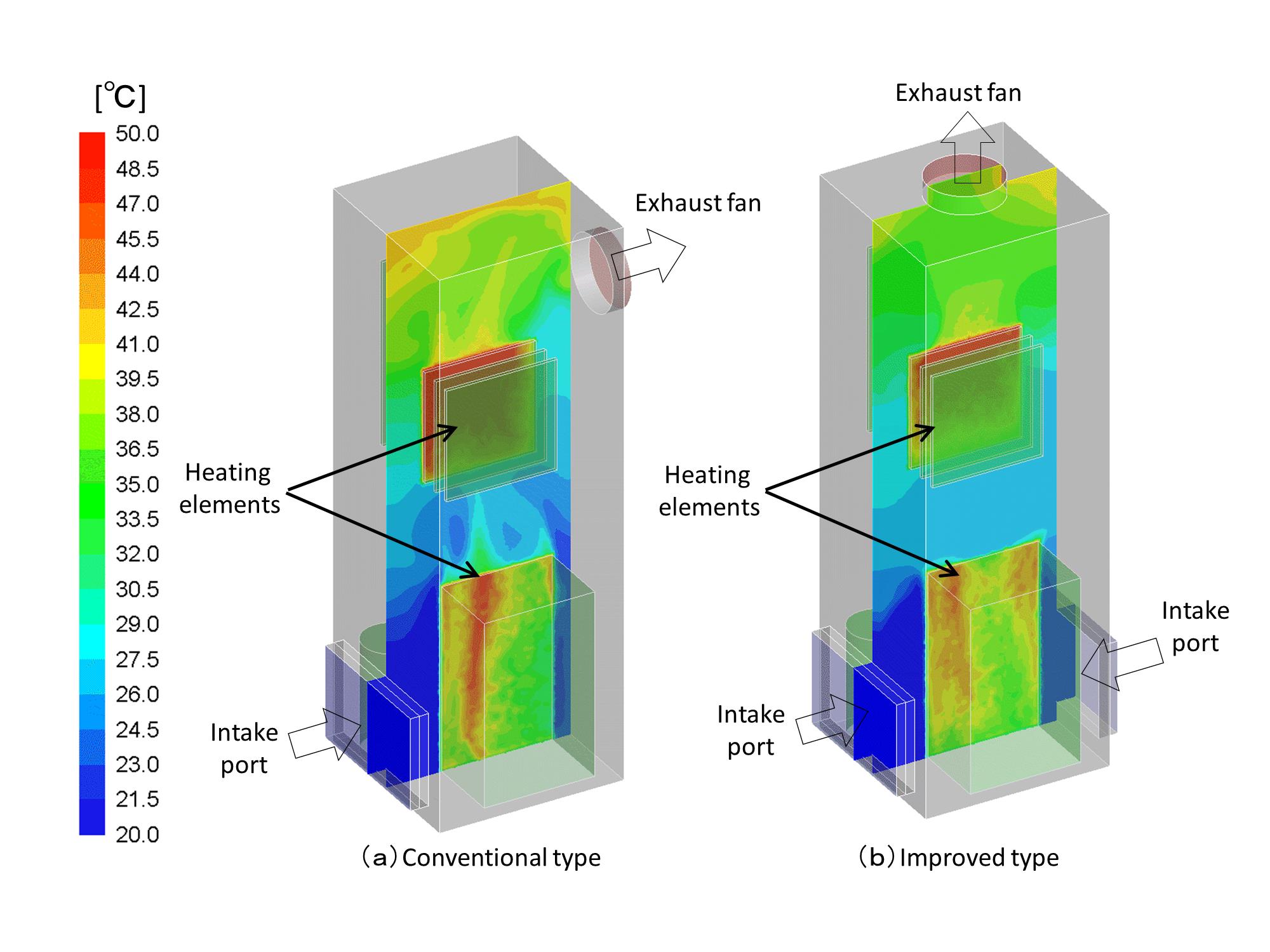
-
Forecasting the amount of heat transfer is an important factor in designing a heat exchanger. With hydraulics analysis, it is possible to calculate the heat transfer status due to forced convection and natural convection, and to forecast the amount of heat transfer and the temperature distribution on the surface of the equipment. It is also used as a boundary condition for structural analysis, in order to evaluate thermal stress from the results that are obtained.
This calculation example shows the temperature distribution around the heating element that generates heat, as a result of analysis inside the electronic equipment rack. From these results, we can see that the conventional type (a) cannot sufficiently cool the heating element, because it has only one intake port for outside air. On the other hand, the improved type (b) has two locations for the intake of outside air, and therefore offers better cooling efficiency than the conventional type. Moreover, the stagnation of high-temperature air in the upper part of the rack is prevented by moving the exhaust fan to the upper side.
Forecasting Particle Behavior in Containers
-
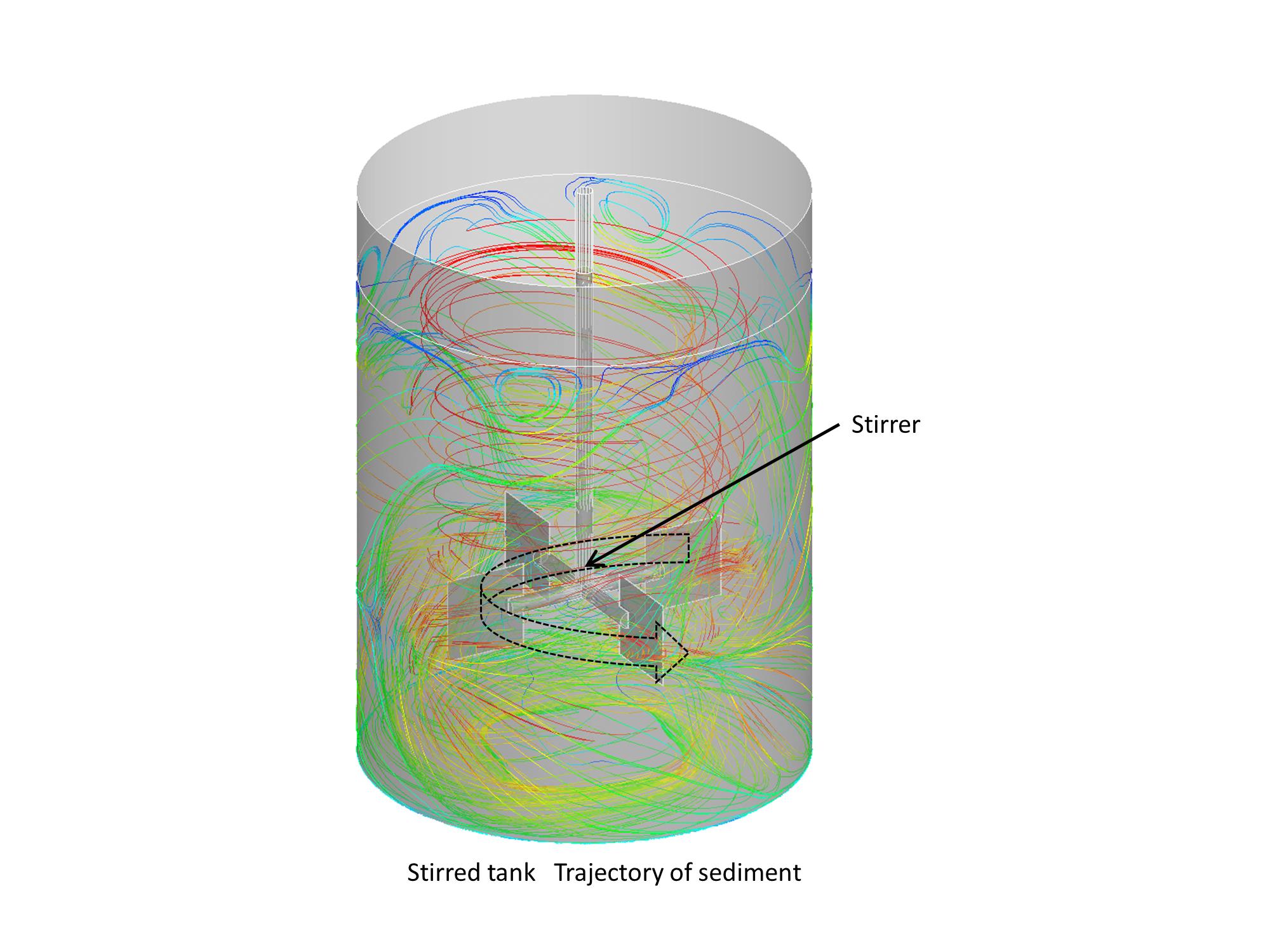
-
Forecasting particle behavior is an important factor in fields such as gas diffusion into liquids in chemical processes and dust recovery in environmental equipment. Thermal hydraulics analysis can be used to forecast the behavior of bubbles in a liquid, the behavior of solids in a gas, and the behavior of droplets with evaporation in a gas.
This calculation example shows the trajectory of sediment with various particle sizes when operating the stirrer, as a result of an analysis of the stirrer tank . From these analysis results, we can understand conditions where sediment is sufficiently agitated by the rotation of the stirrer and does not remain at the bottom, and also conditions where a vortex is generated.
Forecasting Fluid Force
-
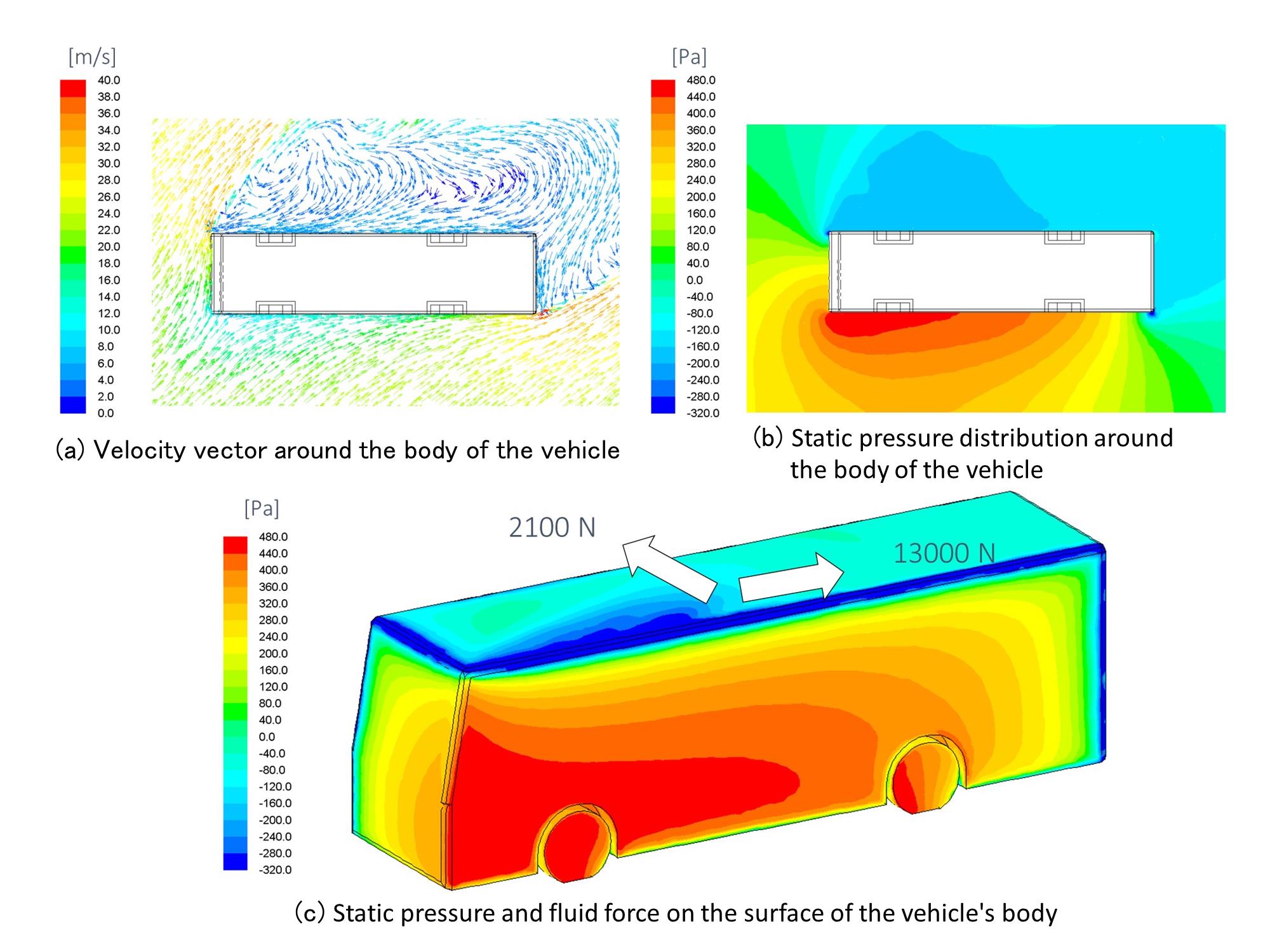
-
Forecasting fluid force is an important factor for considering the strength and vibration of structures in the flow. With thermal hydraulics analysis, it is possible to forecast the force applied by a stationary structure upon a rotating machine (fan, pump, etc.).In addition to a steady force, it is also possible to forecast a force that fluctuates periodically, causing vibration. The forecasting of fluid force is used to study strength when designing equipment, and to study measures for preventing trouble caused by vibration.
This calculation example shows the results of an analysis of the influence of crosswind on a traveling vehicle.(a) shows the flow velocity vector around the vehicle that received the crosswind.(b) shows the static pressure distribution at that time.(c) shows the static pressure distribution on the surface of the vehicle’s body. From these analysis results, it is possible to find the fluid force upon the body of the vehicle from the pressure distribution around the body of the vehicle that is generated by a crosswind.
Forecasting Concentration Distribution
-
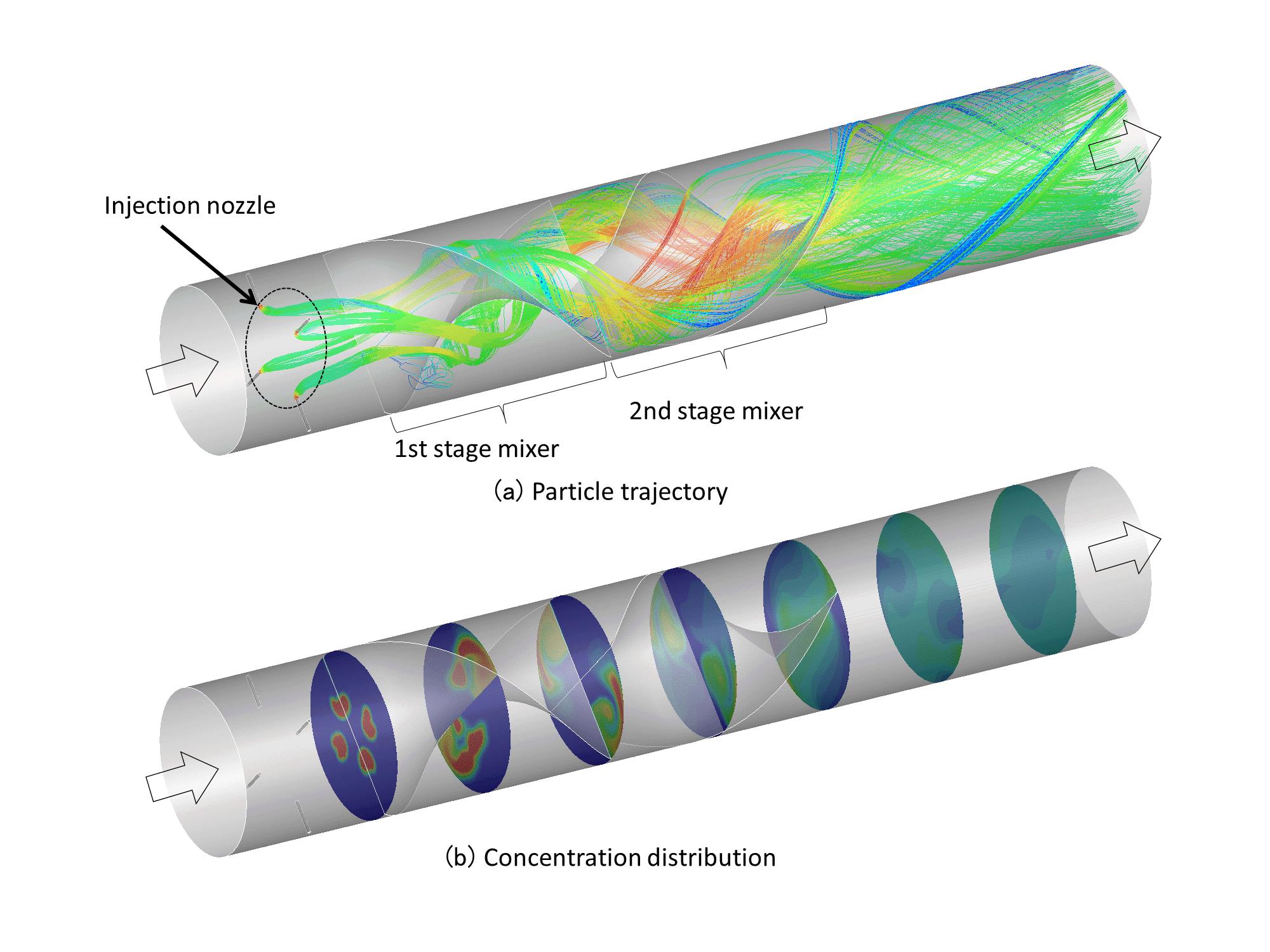
-
The forecasting of concentration distribution is an important factor that is required in the field of environmental problems and the manufacturing processes for industrial products such as food machinery. With thermal hydraulics analysis, it is possible to forecast the status of the mixing process and the status of the diffusion of exhaust gas into the atmosphere. It is also possible to forecast mixing processes that involve chemical reactions. The forecasting of concentration distribution is used in the field such as environmental problems and to improve product efficiency.
This calculation example shows the results of the analysis of a static mixer. (a) shows the trajectory of a droplet emitted from the injection nozzle.(b) shows the concentration distribution at that time. The droplet concentration distribution in each cross section, from immediately after discharge from the injection nozzle to the area near the outlet, shows that the concentration is sufficiently diffused and mixed uniformly by the two-stage mixer.
